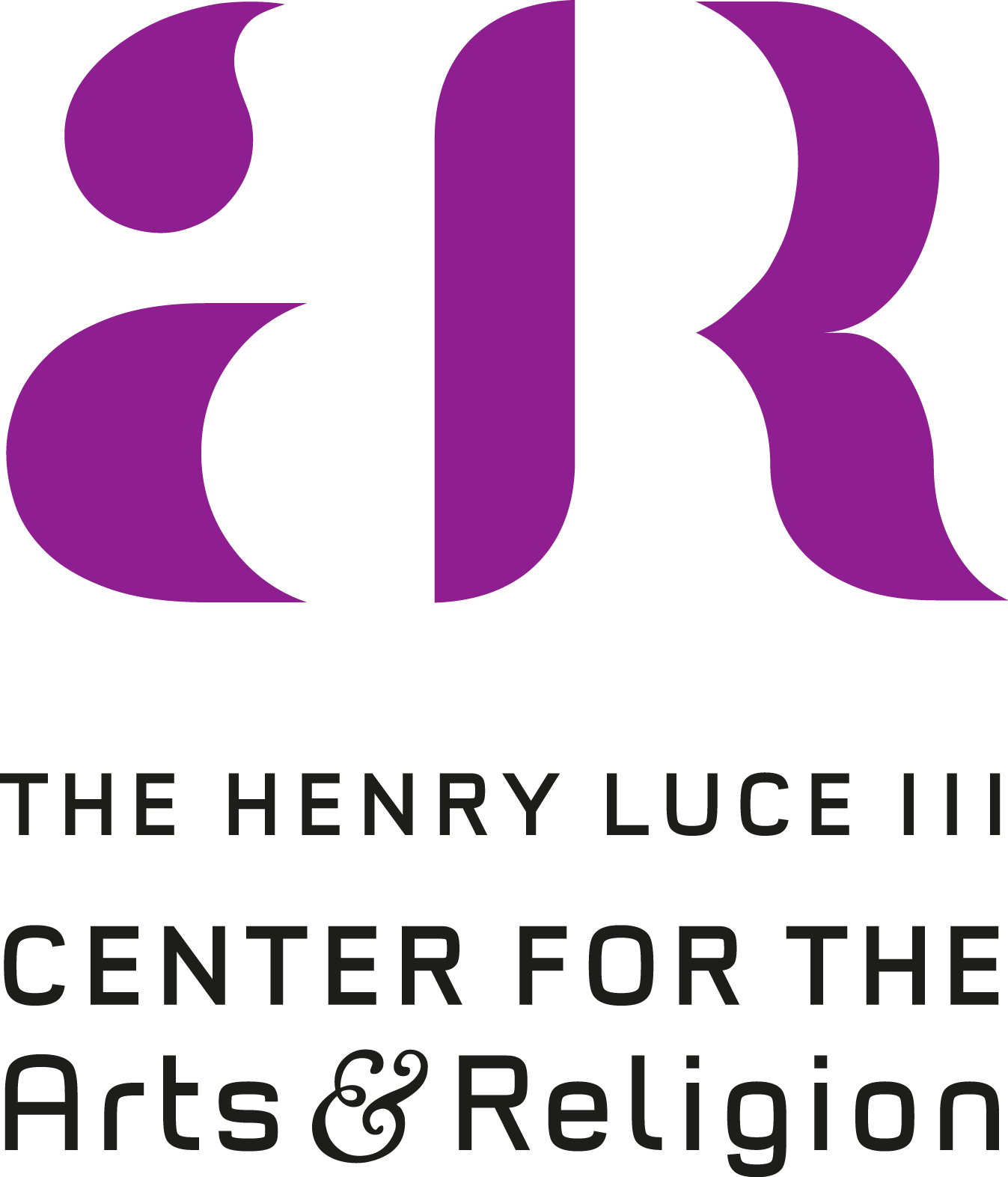Avraham Borshevsky
Psalm 92, 2007
8½ x 14”
Black sofer ink, colour calligraphic inks, 24K gold leaf and gold paint on calfskin parchment
A USSR-born Hebrew calligrapher who made aliyah to Israel, Avraham Borshevsky works in both artistic Hebrew calligraphy and the much more precise, craft-oriented world of Jewish ritual calligraphy (STaM), creating mezuzahs and Torah scrolls according to regulations specified by rabbinic regulations. This work of calligraphic art contains a verse from Psalm 92:
The righteous flourish like the palm tree,
and grow like a cedar in Lebanon. (Ps 92:12)
In this psalm, traditionally recited every Shabbat, the psalmist affirms faith in the power and goodness of God to aid Israel. The metaphor—the just are like a firmly-rooted tree—appears several times in the Psalter (as in Psalm 1). Even for those who do not read Hebrew, Borshevsky presents the meaning of these words by shaping them into images on the page.
As the morally upright are like trees, so the letters Borshevsky employs are formal and visually upright. They are based on Ashkenazi ‘stam’ script—the script used by Jewish ritual scribes for Torah scrolls—so to the Jewish eye, the letters already connote sacrality before even being read. Since the script is only used for sacred words, anything written with it is meant to last; no shopping lists here. Here too Borshevsky builds on the metaphor: biblical date-palms are known to live for centuries, and cedars for millennia. Further, Borshevsky flourishes the letters with leaf patterns, suggesting tree leaves. He even shapes the page of writing to look like a large leaf. Not only do the just bloom and prosper, so even the letters written about them do.
For a Torah scroll, the STaM script must be written in pure black ink. But Borshevsky lightly gilds or inlays copper paint into many of the letters—especially the top-right letter (tsadi) opening the verse, as well as all the vowel markings above and below the letters. Biblically, gold suggests the implements of the Temple (Exod 25); but the fear of the Lord (Ps 19:11) and words of wisdom (Prov 25:11) are said to be greater than gold. By using gold to write words praising the path of Torah, Borshevsky both suggests that God’s precepts are precious as gold and that Torah is more precious than gold. And just as Judaism holds Torah to be the “tree of life,” so Borshevsky says that the copper-colored inlay “can resemble the appearance of a tree trunk in places where there is no bark.”
As I write about in the thematic essay, biblical poetry is known for structures of repetition and intensification in and between lines of verse. Here the psalmist repeats the same metaphor—the just are like a mighty tree—but varies and intensifies it in the second half: date-psalms are long-lived, but cedars even more so. Borshevsky echoes this visually by using tagin, small crowns atop letters, for several of the letters in the second half of the verse (lines 3–6 on this page). Tagin only occur on certain letters in stam script, and here it is a happy coincidence that many more of those letters appear in “and grow like a cedar in Lebanon” than in “The righteous flourish like a palm tree.” This happy accident allows Borshevsky to visually magnify the ‘royalty’ of the second half of the verse by adding more of these decorations, which in Hebrew are often called keterim, or “crowns.”
Borshevksy’s work exemplifies the ability of a calligrapher to communicate wholly visually, whether their reader knows the language they write in or not. This kind of intercultural communication is a commonplace in contemporary calligraphy: English-speaking artists, for example, draw inspiration from Arabic, Chinese, and Japanese traditions, though few of them speak those languages.
— Homrighausen
Tagin
The lines with balls at the top of these letters are tagin, a feature of Hebrew scripts for Jewish ritual calligraphy such as Torah scrolls.
The tsadi, the gilded letter at top right, carries the numerical value of 90 in Hebrew—fitting, since this piece was a commissioned gift for someone’s 90th birthday.
Further Reading:
Borshevsky’s works in the International Calligraphy Museum
“How Avraham Borshevsky Made His Dream Come True,” International Exhibition of Calligraphy, February 7, 2011.
Vick, Susan, and Marc Michael Epstein. “Illuminating the Present: Contemporary Jewish Illumination.” In Skies of Parchment, Seas of Ink: Jewish Illuminated Manuscripts, edited by Marc Michael Epstein, 229–54. Princeton, NJ: Princeton University Press, 2015.
Read more:
Biblical Poetry and the Art of Repetition
Jonathan Homrighausen






